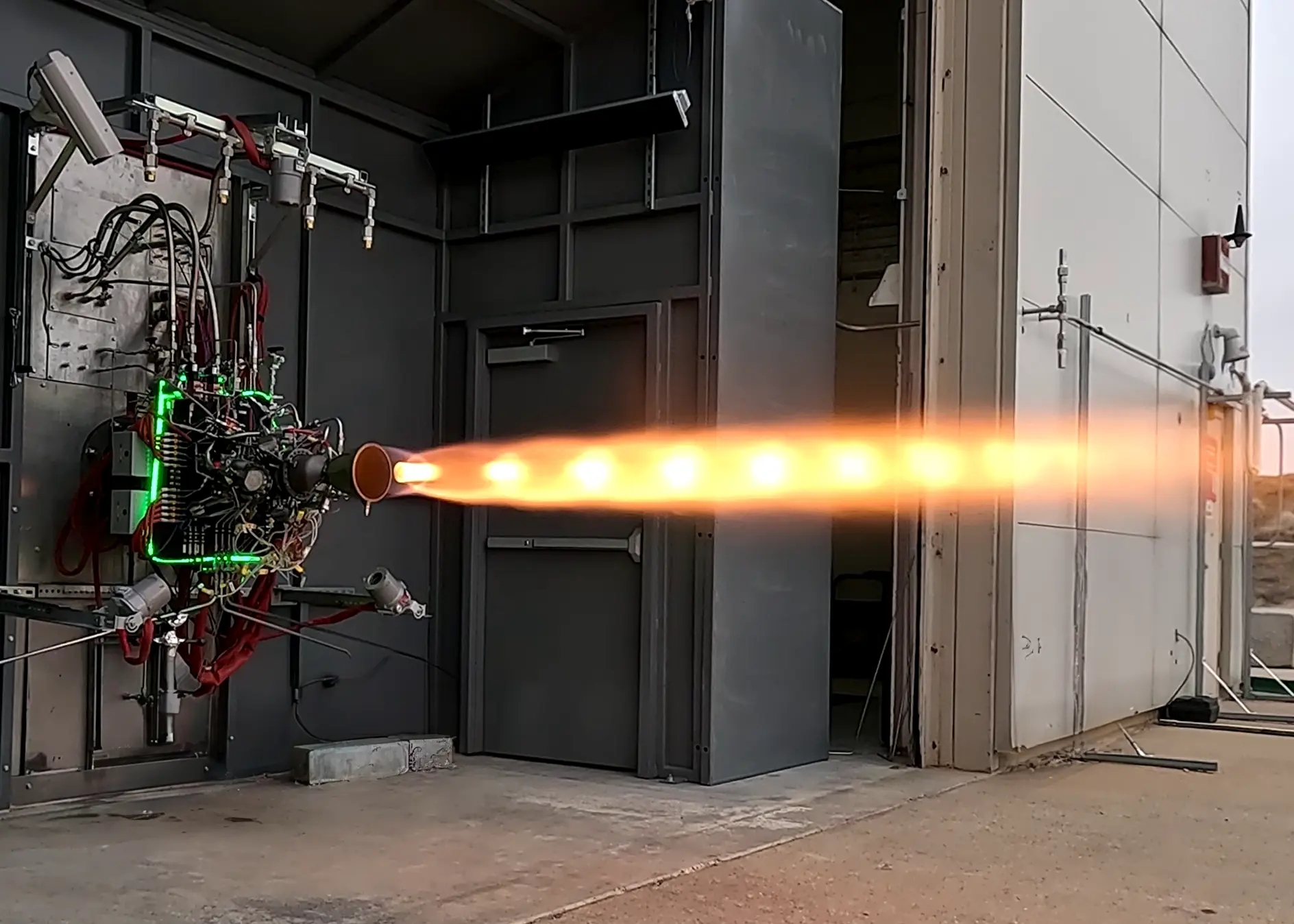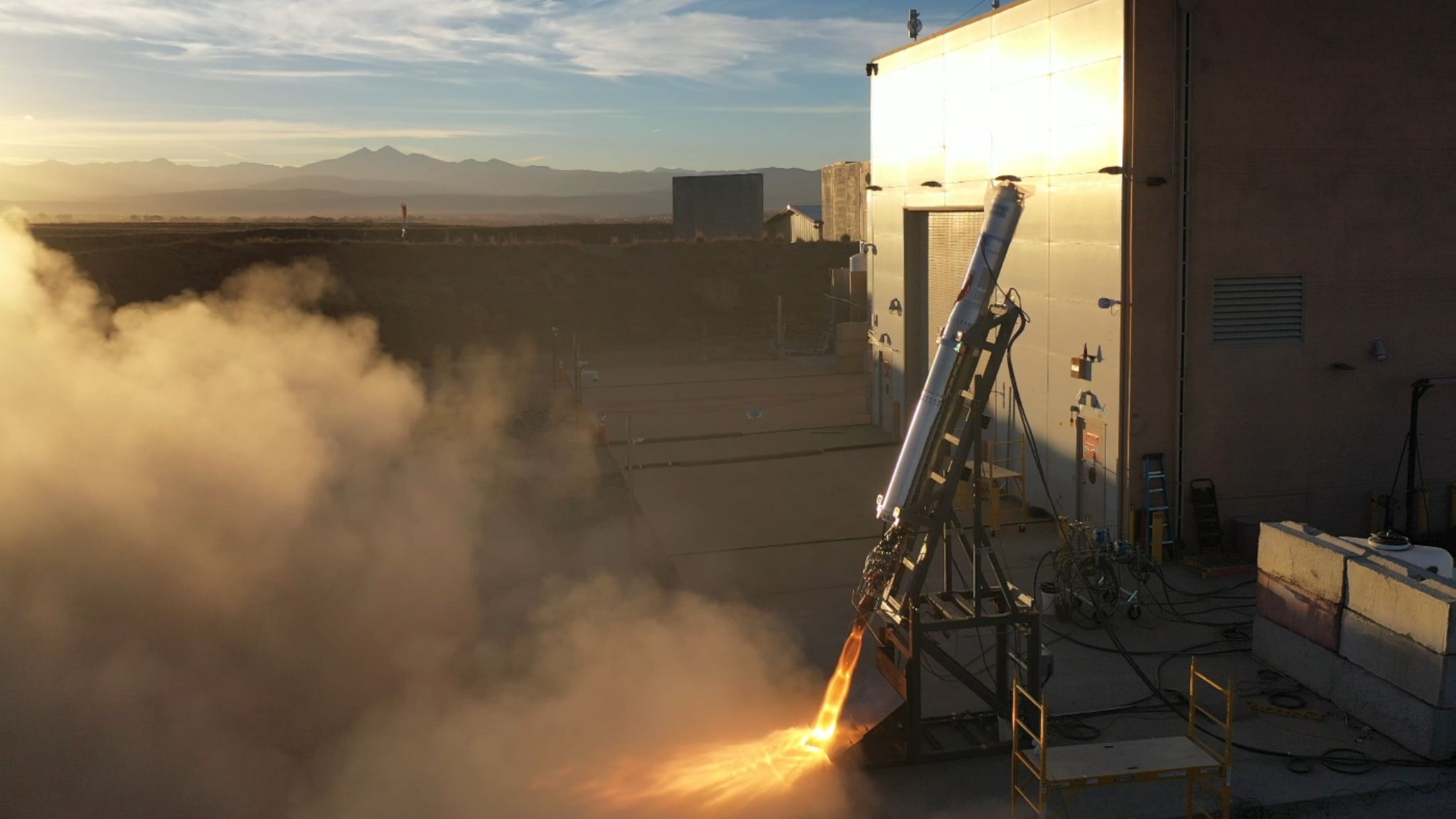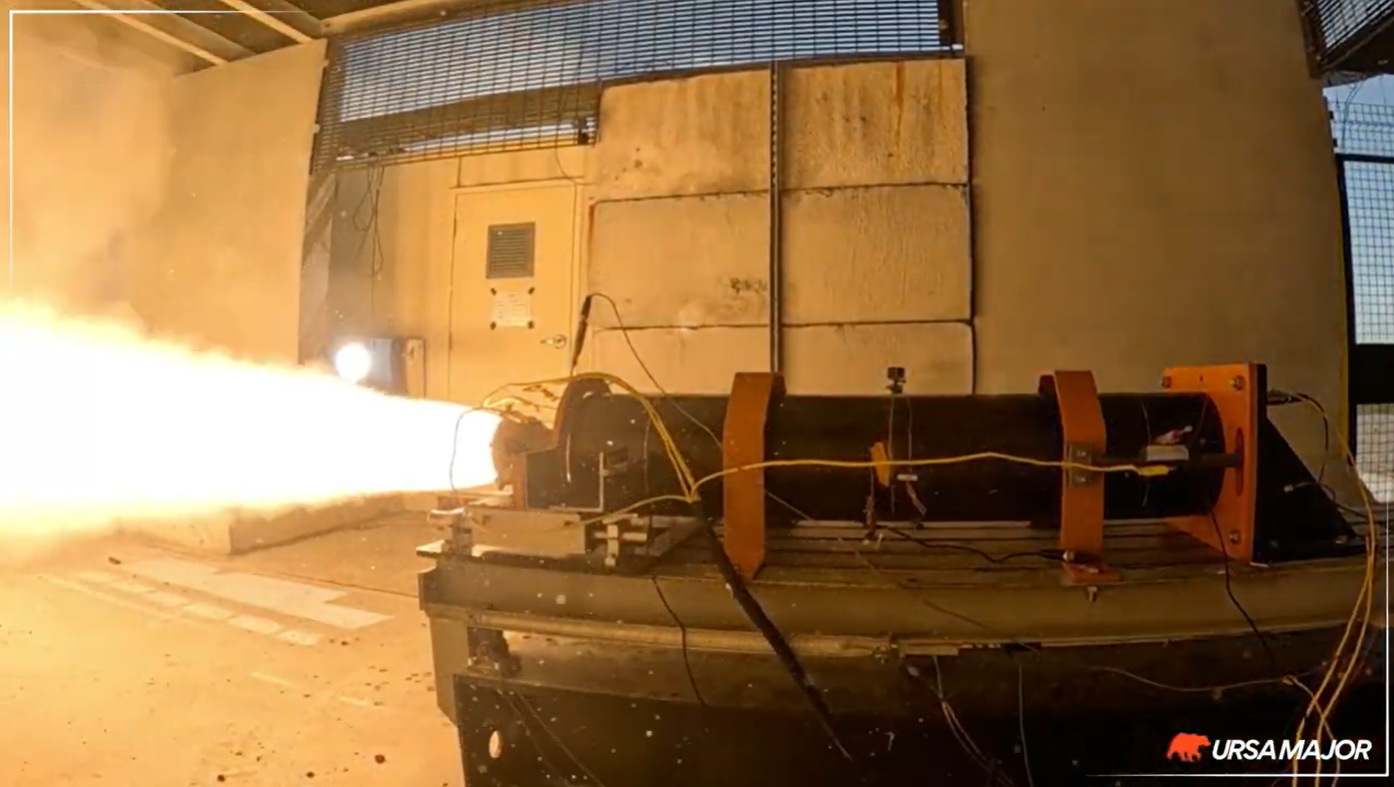
Ursa Major Successfully Hotfires Its Draper Engine

DENVER, May 30, 2024, Ursa Major announced the successful March hotfire of its Draper engine at the company’s headquarters in Berthoud, Colorado – a huge milestone for the liquid engine. The development of Draper was announced in May 2023, and with an ambitious goal of hotfiring Draper within 12 months, the engine is well ahead of schedule, outpacing industry standards.
The 4,000-pound-thrust closed catalyst cycle engine uses a non-cryogenic fuel that optimizes storability, making the engine uniquely suited for in-space propulsion applications. Based on its thrust profile, the engine is not only capable of maneuvering objects in orbit but doing so without fully depleting its store of propellant, potentially allowing for additional mission functions. As adversaries like Russia and China pursue anti-satellite systems, the need for defensive technology will continue to grow – Ursa Major’s Draper propulsion system is primed to be a part of that response.
The engine’s accelerated pace through the development process showcases Ursa Major’s unique ability to meet the growing demand of the United States defense industrial base. Originally designed for hypersonic applications, Draper is additionally working to position the U.S. as a competitor in the field of hypersonics, where the country currently lags dangerously behind adversaries.
Drawing on the architectural and manufacturing legacy of Ursa Major’s Hadley engine, Draper combines the storable attributes of a solid rocket motor with active throttle control and throttle range of a liquid engine, providing the maneuverability and flexibility that is needed for hypersonic defense. It is this unique design that allows the engine to effectively simulate hypersonic threats and that makes the engine well-equipped to address the critical gap in America’s hypersonics capabilities.
“We’re excited with how quickly the development program has progressed and look forward to fielding the engine for hypersonics and in-space applications in the coming years,” said Brad Appel, Chief Technology Officer at Ursa Major. The development and testing of Draper are supported by funding from a contract with the Air Force Research Laboratory (AFRL). The funding was also directed to building the Draper-specific test stand at Ursa Major’s headquarters in Berthoud, Colorado, which has and will continue to allow for greater testing capabilities and, in turn, quicker iteration and development of the Draper engine.
“Perhaps the most-impressive aspect of this program is the delivery of a versatile, storable rocket engine in such an incredibly short timeframe. AFRL and industry is taking on the challenge our USAF and USSF leadership has asked of us…to deliver faster capabilities, craft tighter bonds with industry, and leverage what is already in existence to provide asymmetric advances. And thankfully, this is just the tip of the iceberg when it comes to what we are doing as One Team,” said Dr. Shawn Phillips, Chief of AFRL’s Rocket Propulsion Division.
Following this successful engine hotfire, Ursa Major intends to continue an aggressive development campaign and mature the engine towards flight qualification.
About Ursa Major
Ursa Major is America’s leading privately funded company focusing solely on rocket propulsion, bringing high-performance, staged combustion engines to market for space launch and hypersonic applications. Ursa Major customers, ranging from “New Space” startups to enterprise-level aerospace leaders and the U.S. government, get to flight faster, more reliably, and cost-effectively. The company employs the most sought-after engineers from top space programs and universities. Headquartered in Berthoud, Colorado, Ursa Major was named one of the best places to work by Built in Colorado three years in a row. For more information, visit ursamajor.com. For downloadable images and videos, click here.
About AFRL
The Air Force Research Laboratory, or AFRL, is the primary scientific research and development center for the Department of the Air Force. AFRL plays an integral role in leading the discovery, development and integration of affordable warfighting technologies for our air, space and cyberspace force. With a workforce of more than 11,500 across nine technology areas and 40 other operations across the globe, AFRL provides a diverse portfolio of science and technology ranging from fundamental to advanced research and technology development. For more information, visit www.afresearchlab.com.
Media Contacts
Ursa Major
[email protected]




